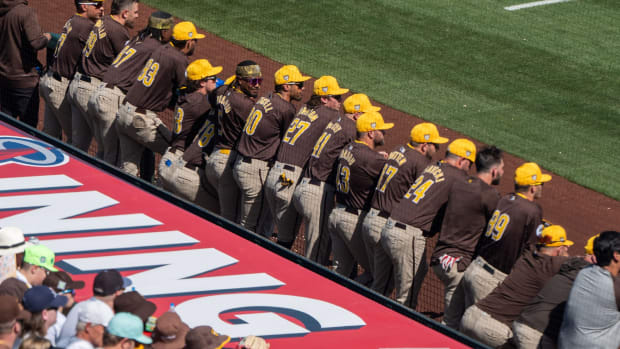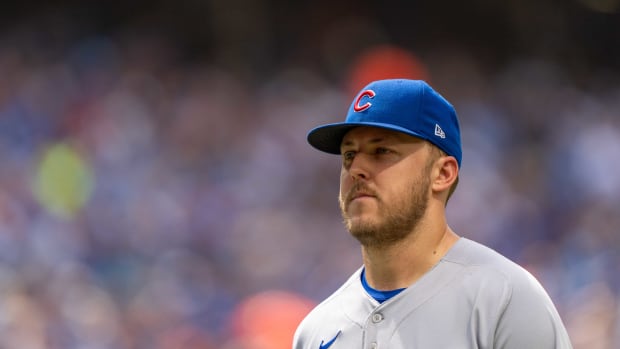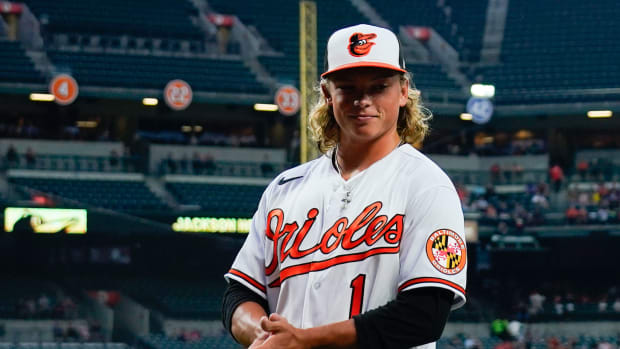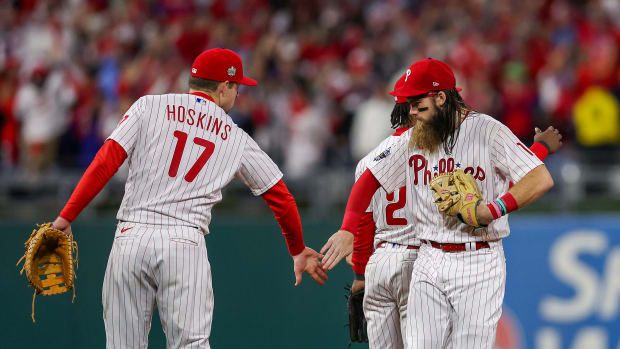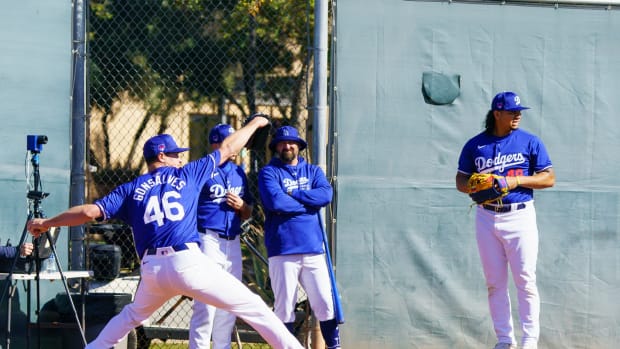How the Tampa Bay Rays Reinvented the Concept of Starting Pitching
One by one, the Rays’ starting rotation was whittled down to nothing. It began on July 23, when Blake Snell went on the disabled list with shoulder fatigue. Two days later, Nate Eovaldi was sent to Boston for pitching prospect Jalen Beeks. For the next week, Chris Archer was all that stood between Tampa and the void—until, at the July 31 trade deadline, he was shipped to Pittsburgh for three prospects. About an hour after his trade, MLB.com dutifully updated the Rays’ starter depth chart on its website. On the digital mound where Archer’s face had once stared out atop a list of pitchers, there was now merely an empty box devoid of names.
For most teams, a blank rotation is usually sign of a catastrophe in progress. For the Rays, though, it was the inadvertent result of the strategy that has upended their season and the league at large. Where once starters ruled the day, Tampa has chugged through the year by stacking relievers and loading up on bullpen days. Dubbed “the opener,”
it’s proved surprisingly successful with a cast of under-the-radar arms. And with the Rays above .500 after being largely expected to struggle this year, it may be here to stay.
“Yes,” says manager Kevin Cash when asked if the team sees itself using the opener next season. “Nothing’s set in stone, and we’re learning as we go, but what we’ve found out is that if you have the right personnel, it’s capable of working.”
General manager Erik Neander is more reserved but likewise in favor. “I’m hesitant to put too much in pen with respect to our plans next year and what we want it to look like,” he says. “It could be traditional, it could be what we’re doing now, or it could be somewhere in between.
“The results have been encouraging,” he adds. “How they compare to a traditional setup, we don’t know. But no matter how a pitching staff is aligned, if you’re getting outs and keeping runs off the board, that’s something you can be happy about.”
The Rays debuted the opener—in which a reliever starts the game and throws anywhere from one to three innings, then gives way to a new pitcher, who will usually throw three to five as essentially a second starter—on May 19 against the Angels, using veteran righty Sergio Romo to pitch the first. They haven’t looked back since. Across the last four months and 84 games, 50 starts have gone to eight different relievers: Romo, Ryan Yarbrough, Ryne Stanek, Hunter Wood, Wilmer Font, Jonny Venters, Matt Andriese, Diego Castillo, and Yonny Chirinos. As openers, they’ve combined for 93 innings and 41 earned runs—a 3.97 ERA, or better than the league average of 4.15.
The men who follow the opener are just as important to its success, though. Long relievers in practice, they’ve been dubbed “bulk guys” by Yarbrough and Stanek. “They started calling the person who started the game the opener, and [Yarbrough] was like, I feel kind of left out that we have no name,” Stanek explains. “We were messing around and were like, you’re bulking today. You’re the bulk guy.”
The name may be clunky, but so far, it’s worked. As the second man in what’s essentially a relay race, Yarbrough has a 3.73 ERA in 70 relief innings behind the opener. Beeks, meanwhile, rebounded from a disastrous first turn in the system—eight runs in 3 2/3 frames in relief of Stanek—to allow just five runs over his next 19, including four shutout innings against Boston. A starter for the entirety of his pro career before coming to Tampa, Beeks was nonetheless a quick convert to opener life.
“They explained their philosophy, and I said, okay, I’m on board,” he says. “It’s definitely different, but you’re still pitching and trying to get guys out. Whenever they want to throw me in there, I’m ready to go.”
That kind of buy-in is crucial to the opener’s success, as is the general flexibility of Tampa’s roster. For the most part, the pitchers tasked with taking part in this scheme are pre-arbitration arms with little to no major league service time and experience both starting and relieving. That makes them cheap and malleable, which is key to the strategy.
“I feel like we’re the perfect case to do it,” Yarbrough says. “We have a lot of young guys who’ve been in different roles throughout their minor league careers, who can rotate here and there. There are some teams that wouldn’t do it because they have full-fledged starters. We’re happy to be here, and we’re happy to contribute.”
The Rays have rebuilt their rotation somewhat since going to zero, with Snell returning from injury and Tyler Glasnow joining the team after coming over from Pittsburgh. But the majority of the team’s post-deadline starts have gone to the duo of Stanek and Wood, pitching an inning or two apiece on anywhere from zero to three days’ rest while also appearing in more routine relief roles as needed.
“I could go two innings and be down a day and be relieving the day after that, go an inning or an inning-plus out of the bullpen,” says the soft-spoken Wood, a righty from Arkansas. “It’s a little different, but it’s nice knowing you’re going to pitch and you’re going to be here for another day in the big leagues.”
In an era where relievers have taken on more work as teams try to avoid having a starter go through a lineup three times, the opener makes a certain kind of sense. “I think it’s actually pretty genius having the high-leverage guy come in the first couple of innings and then hand it over to your long guy to get it into the seventh or eighth where most starters aren’t going,” Wood says. For Neander, there are also benefits beyond the solid results.
“It’s a softer landing for those guys,” he says. “Guys that we weren’t sure were ready to graduate and become a 200-inning major league starter—Yonny Chirinos, Ryan Yarbrough—we thought there was a better entry point where they can go three or four or five innings, experience success, and graduate to a higher inning total as they go forward.”
What remains to be seen is the opener’s impact on the rest of the game. Already, the Twins have announced that they are giving it a whirl in their farm system. “You can’t argue with Tampa’s success,” Minnesota manager Paul Molitor told reporters earlier this month. Other teams, including the Blue Jays and Dodgers, have used the strategy this summer, though that was due mostly to injuries depleting their rotations. But its spread may be limited for now, and the success dependent on the players already in place. “I think so much of it depends on your personnel,” Neander says. Adds Beeks: “You’ve got to have the guys with the right attitude to do this.”
There’s also the question of what the opener means for players financially. Last offseason saw free agents take a massive hit as teams refused to spend, forcing many to accept low-ball offers. More teams embracing the opener could lead to decreased value for starters, who typically earn more than relievers—and not just in free agency, but also in arbitration, where old-school stats like wins are still used to determine salary. “Less starting pitching means you don’t have to pay guys as much,” Angels third baseman Zack Cozart told reporters not long after the Rays began using the opener. “If your whole staff is bullpenning except a couple of guys, your payroll is going to go down because you don’t have to pay starters any more.”
(It’s worth noting that the Rays have the lowest payroll in baseball at $70.9 million, and that the team saw two starters depart this offseason in Alex Cobb and Jake Odorizzi and chose not to replace them as part of a winter in which Tampa cut millions in payroll through free agency and trades.)
If there is a future for the opener, it will likely be in situations similar to Tampa’s: a young team full of players on cheap contracts seeking to take advantage of a potential inefficiency both on the field and monetarily. How far it goes depends on where the Rays end up, and if next year provides the same success; for what it’s worth, the players involved all say they’re happy to keep doing it in 2019. But even if the opener ends up being more quirk than the next tactical innovation, it’s already made a strange yet definite mark.
“Everybody thinks it’s a little weird, which it is, because it’s new,” Beeks says. “Everything’s weird when someone does it first. This could change the game.”































